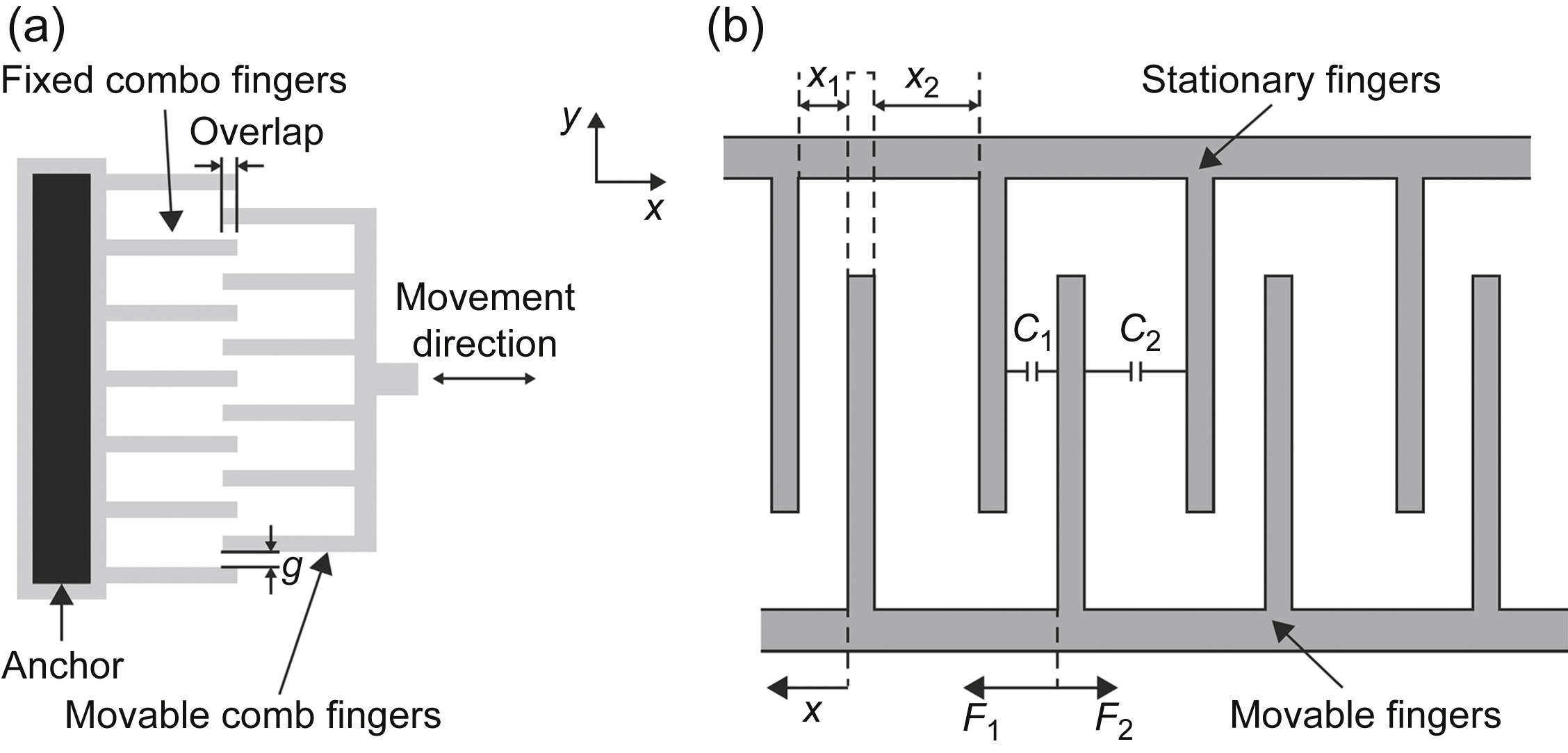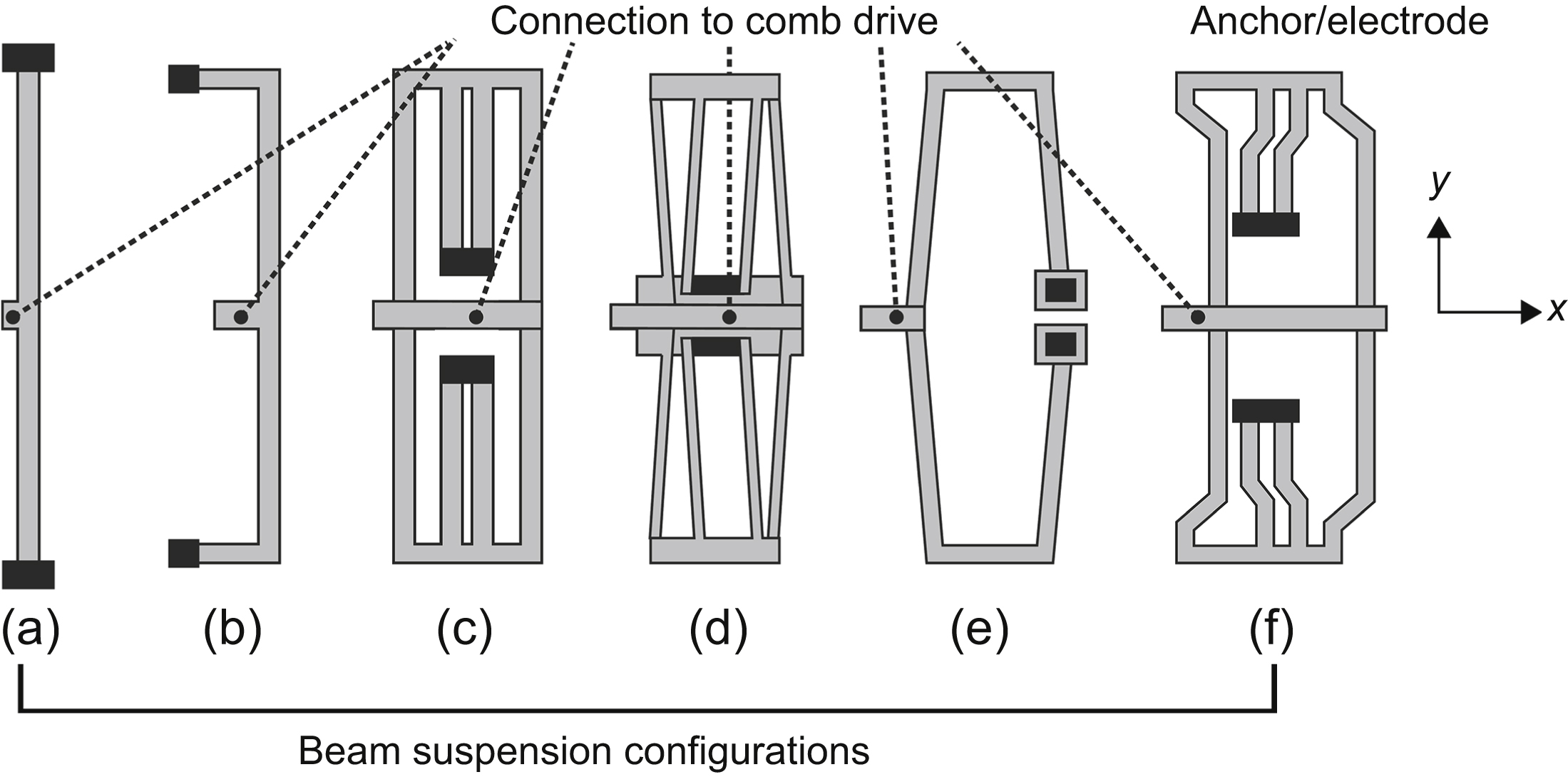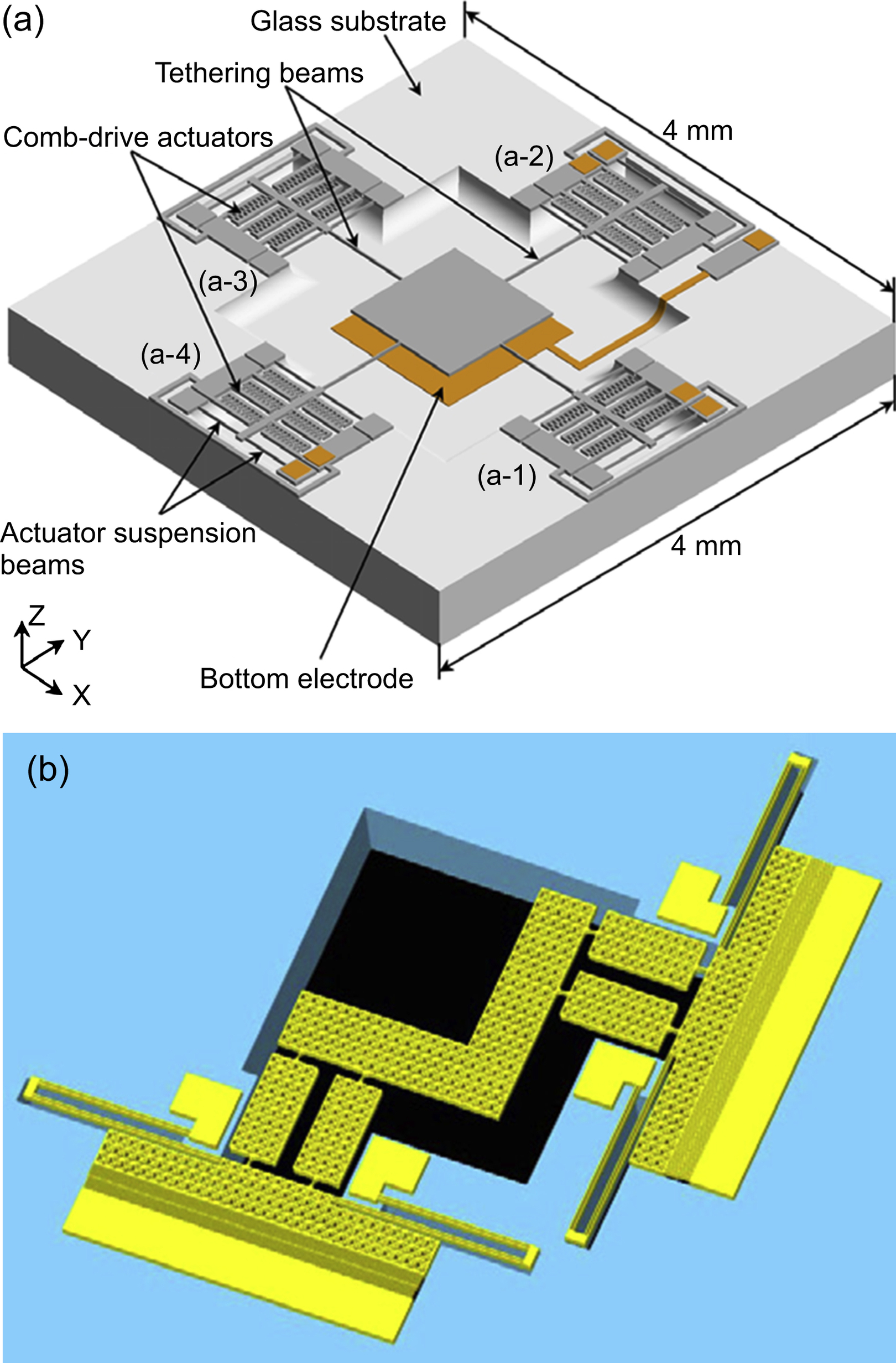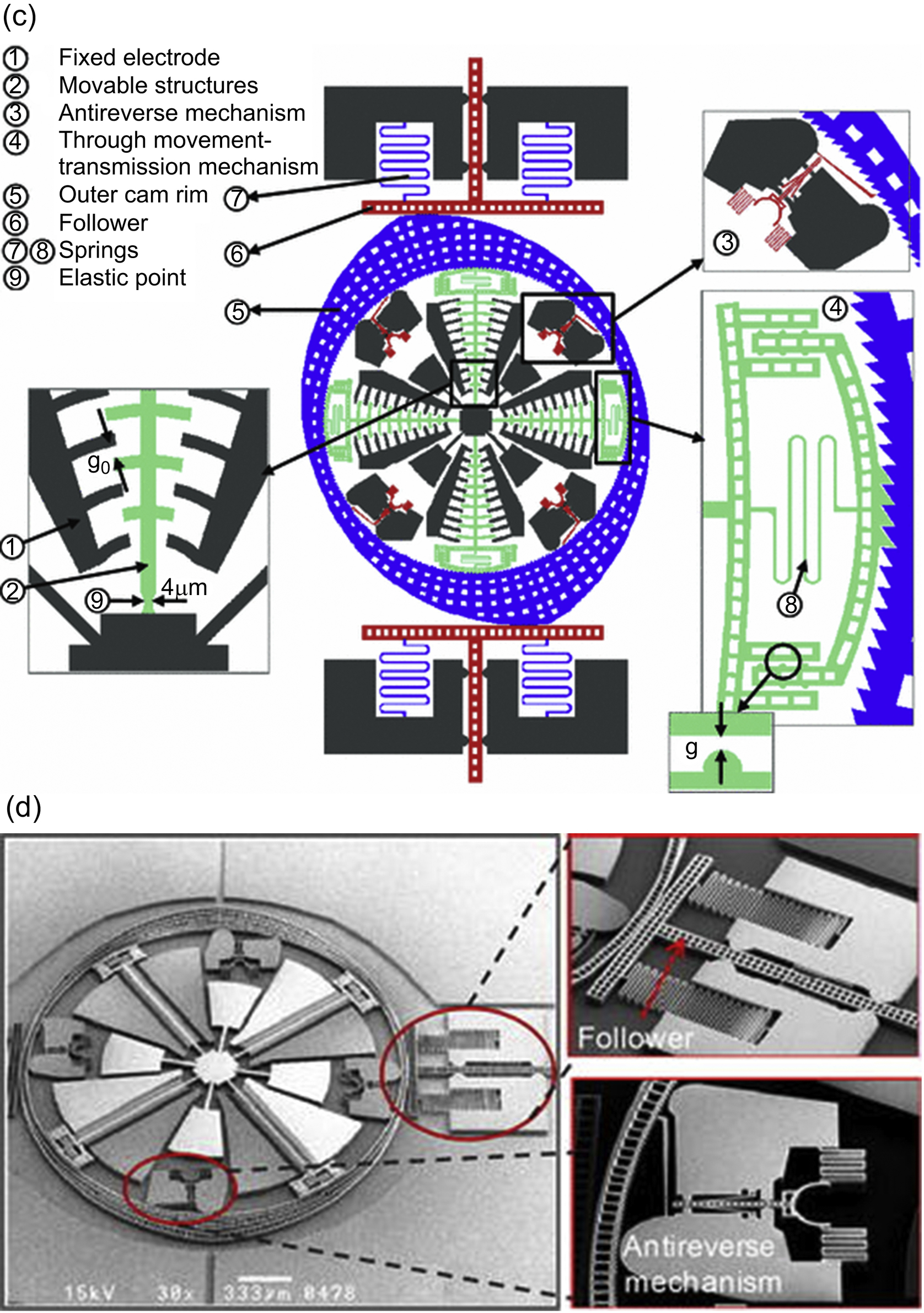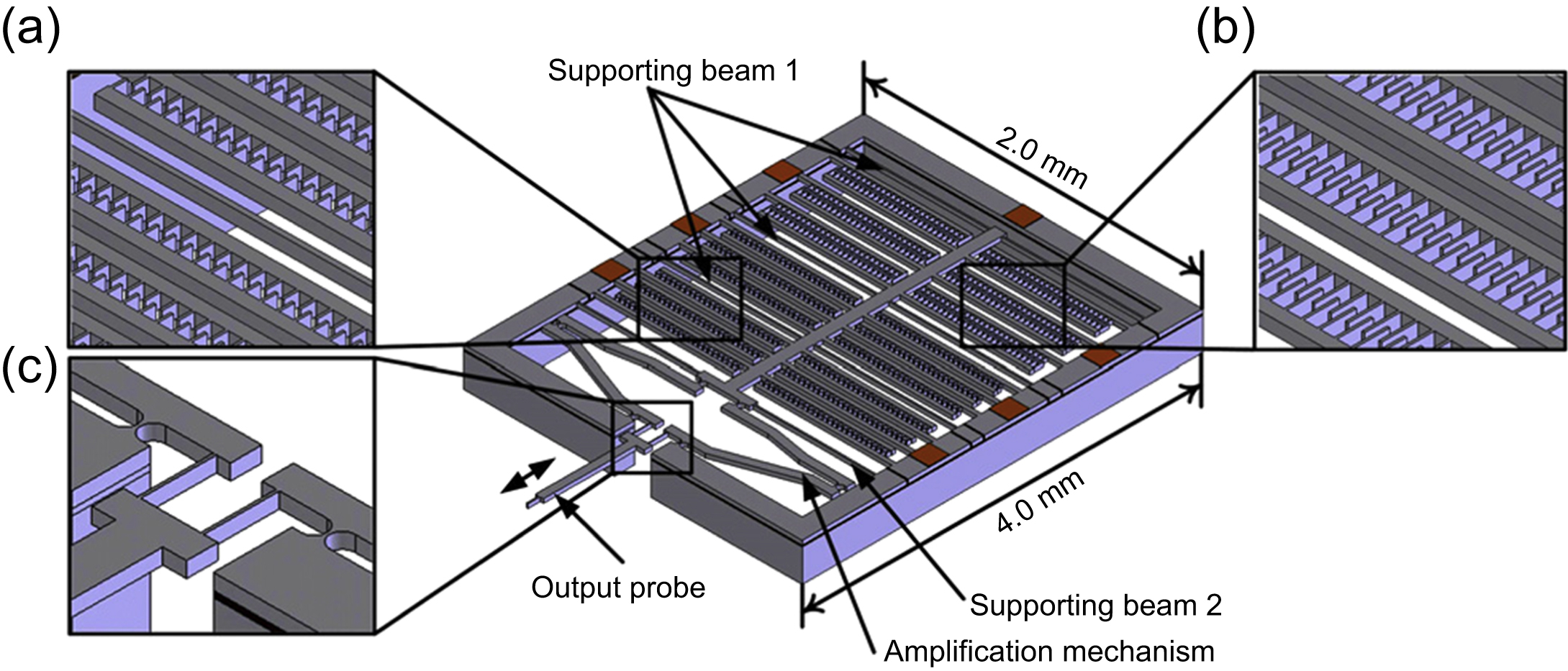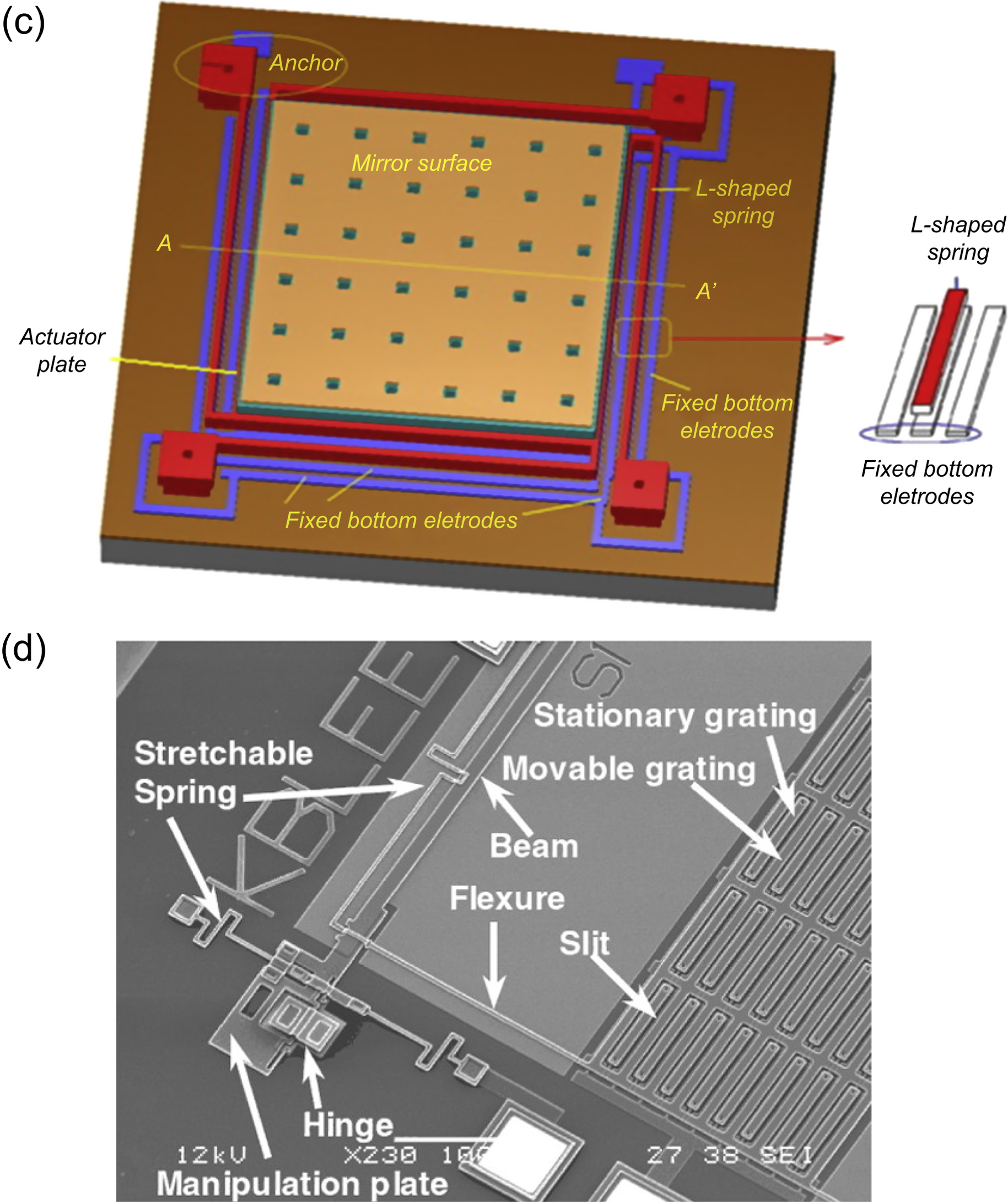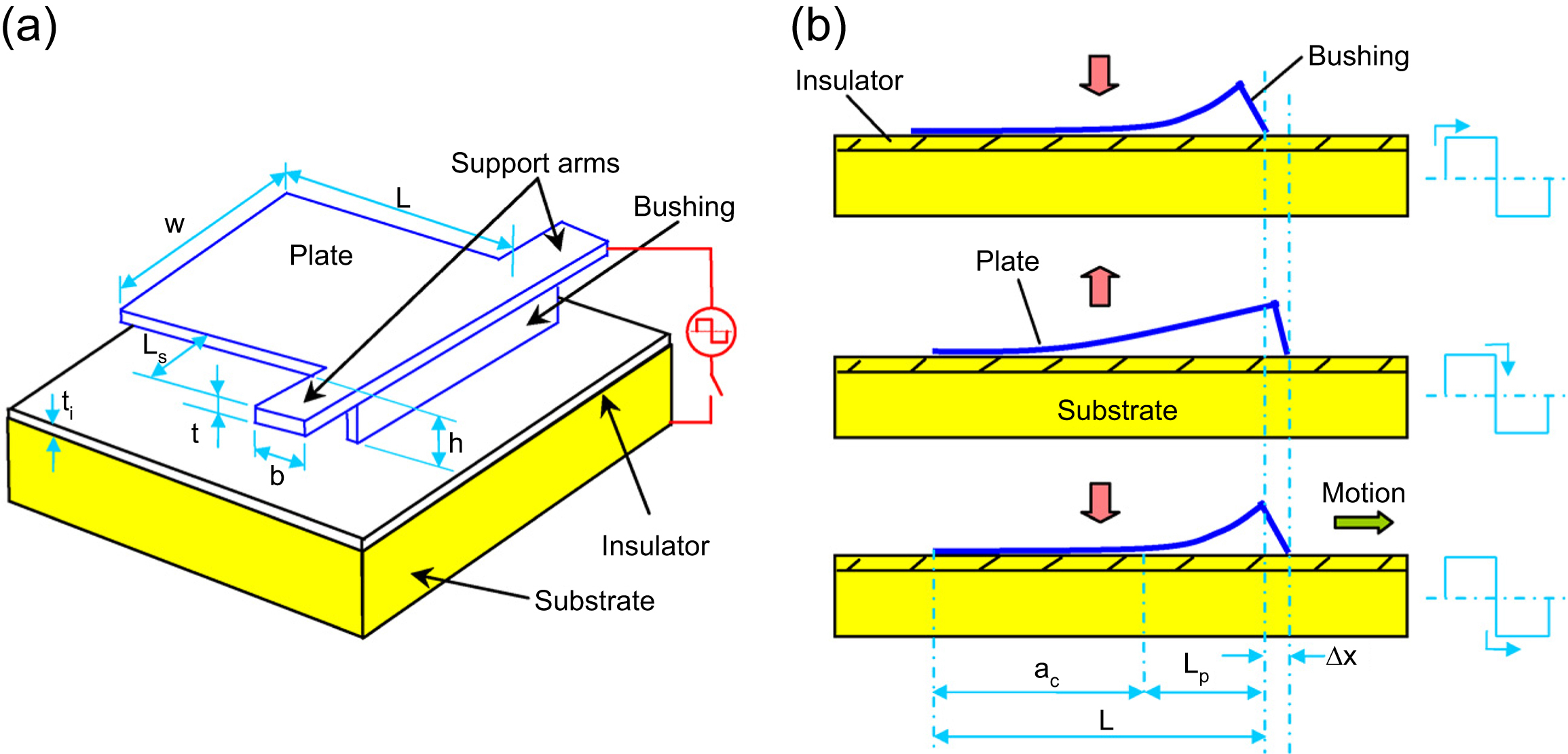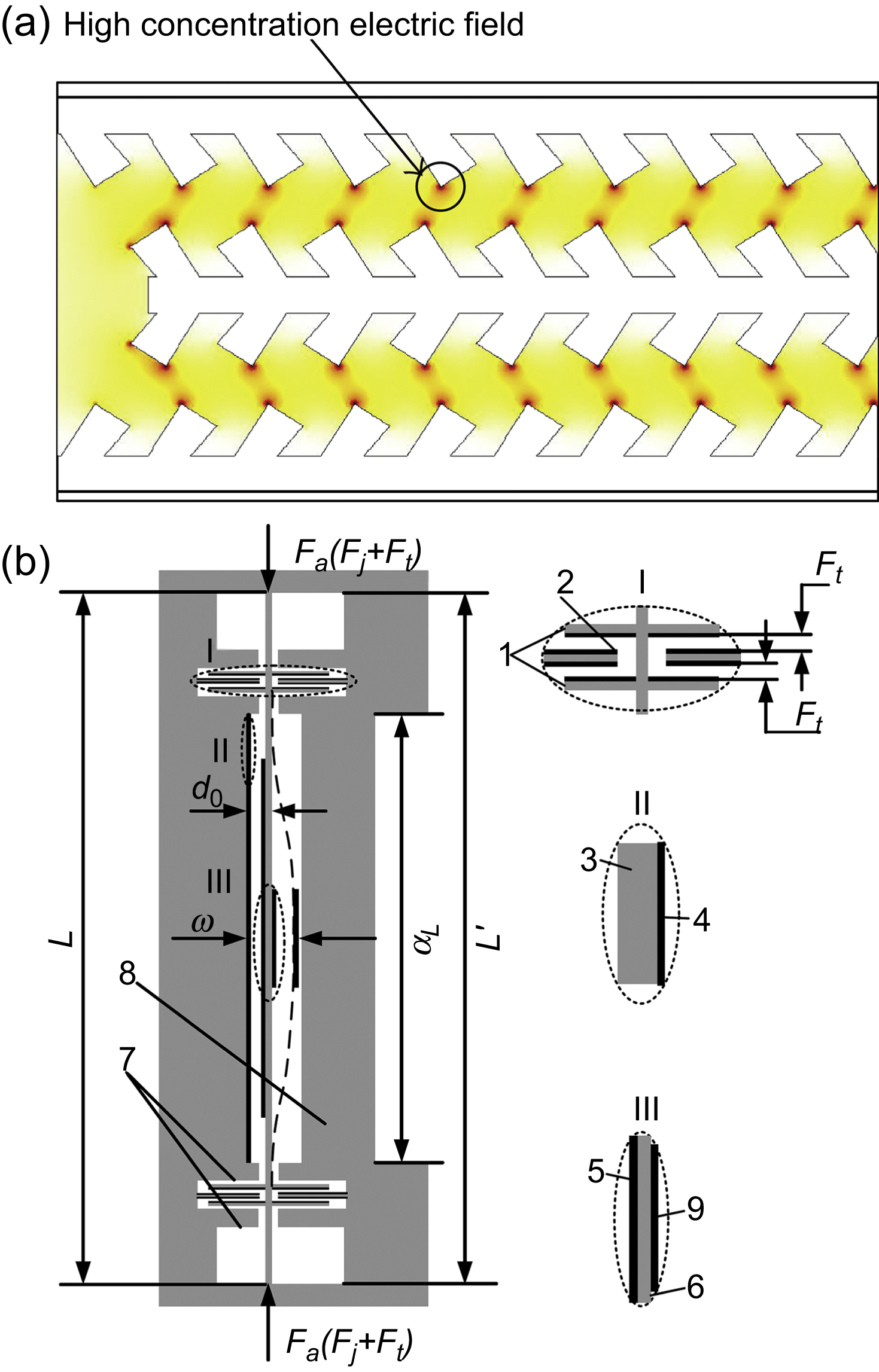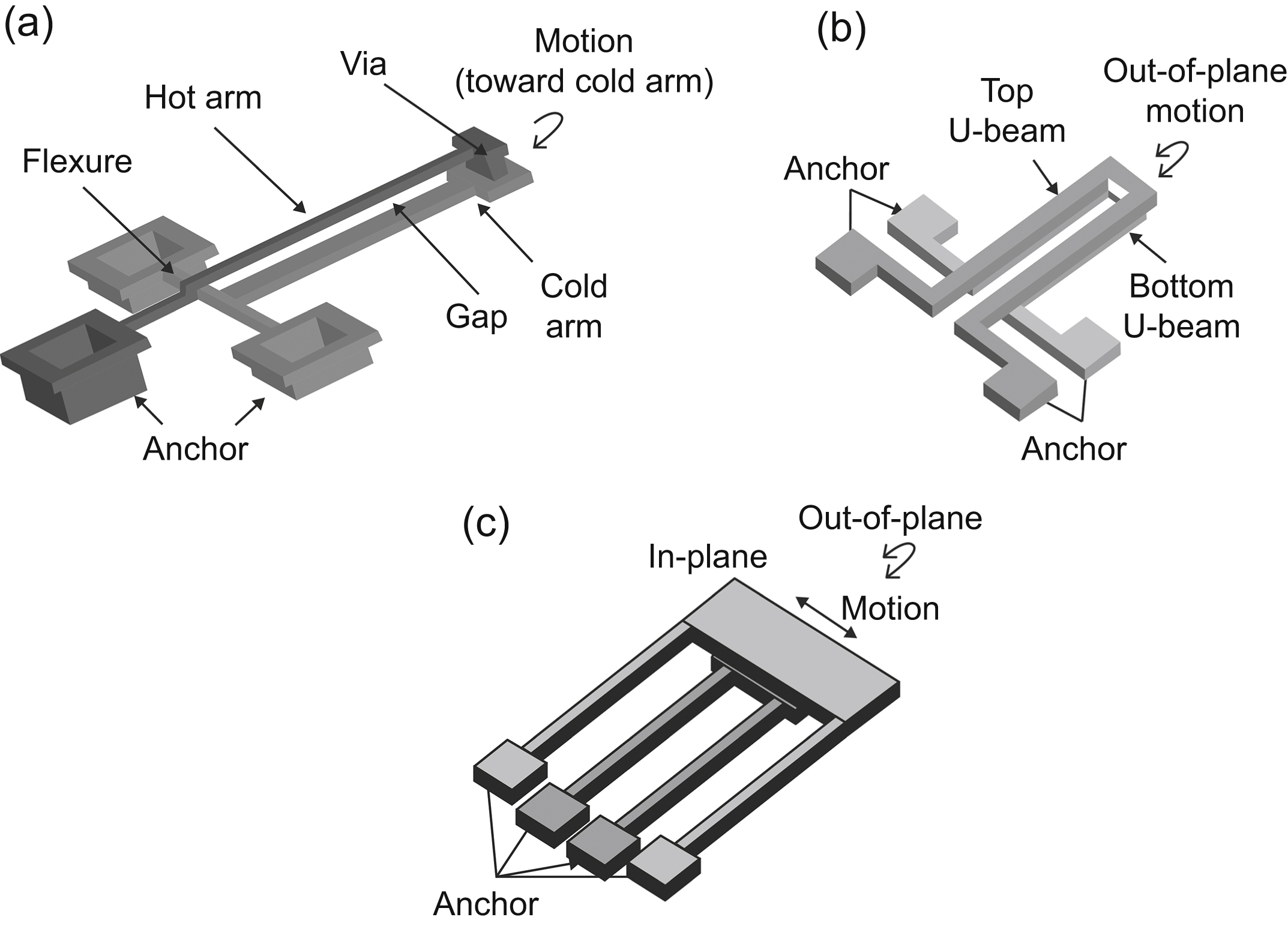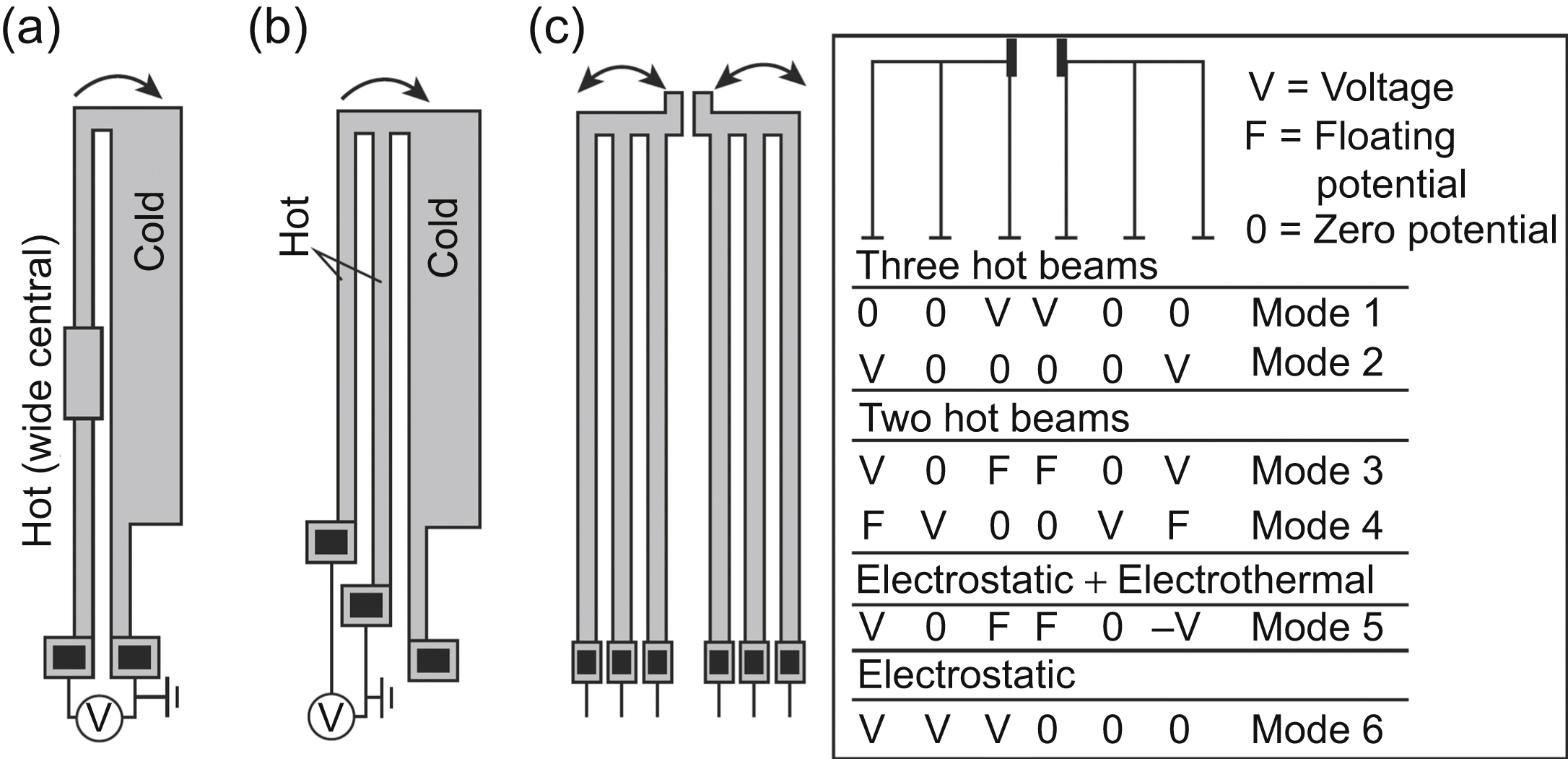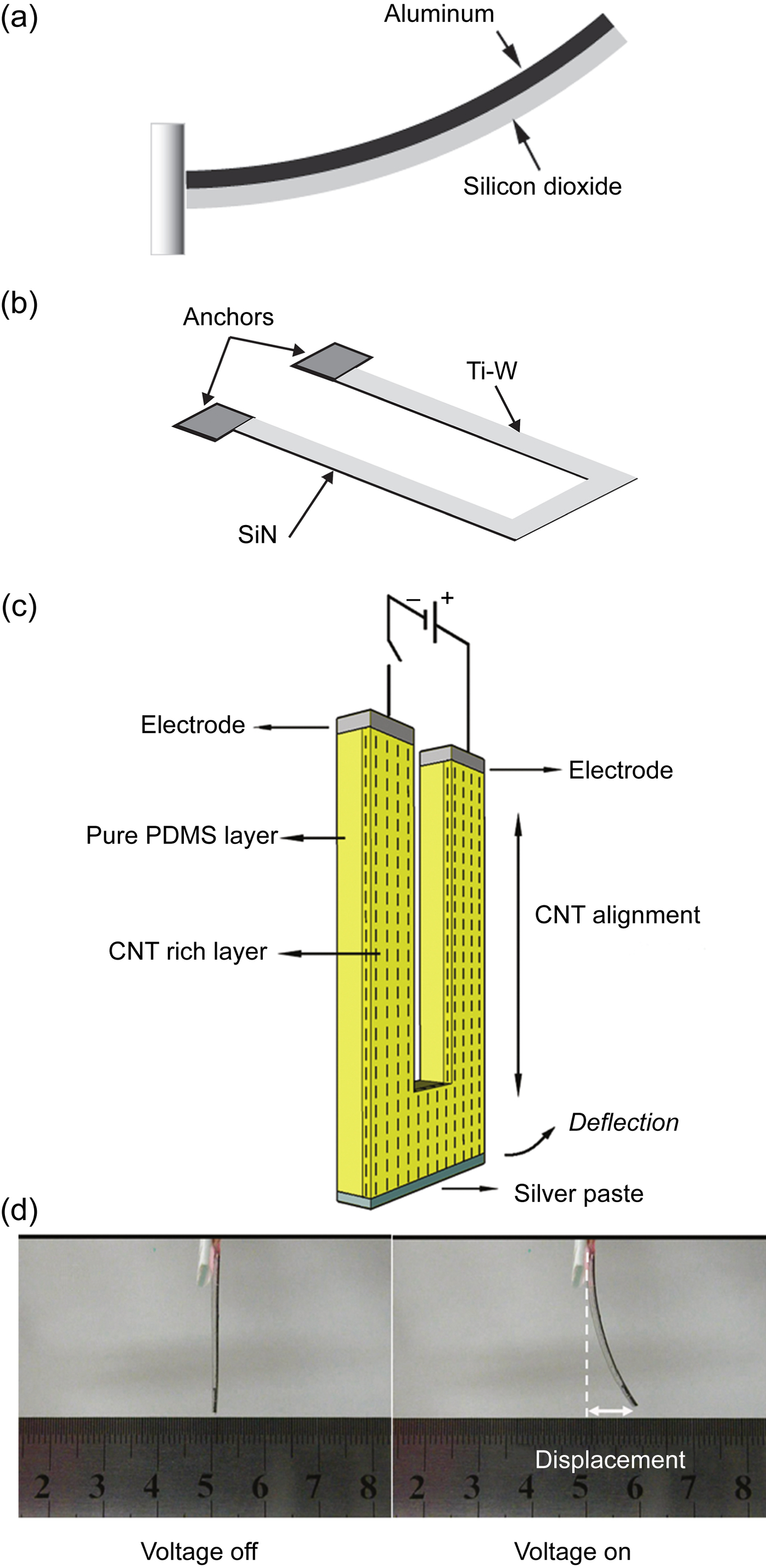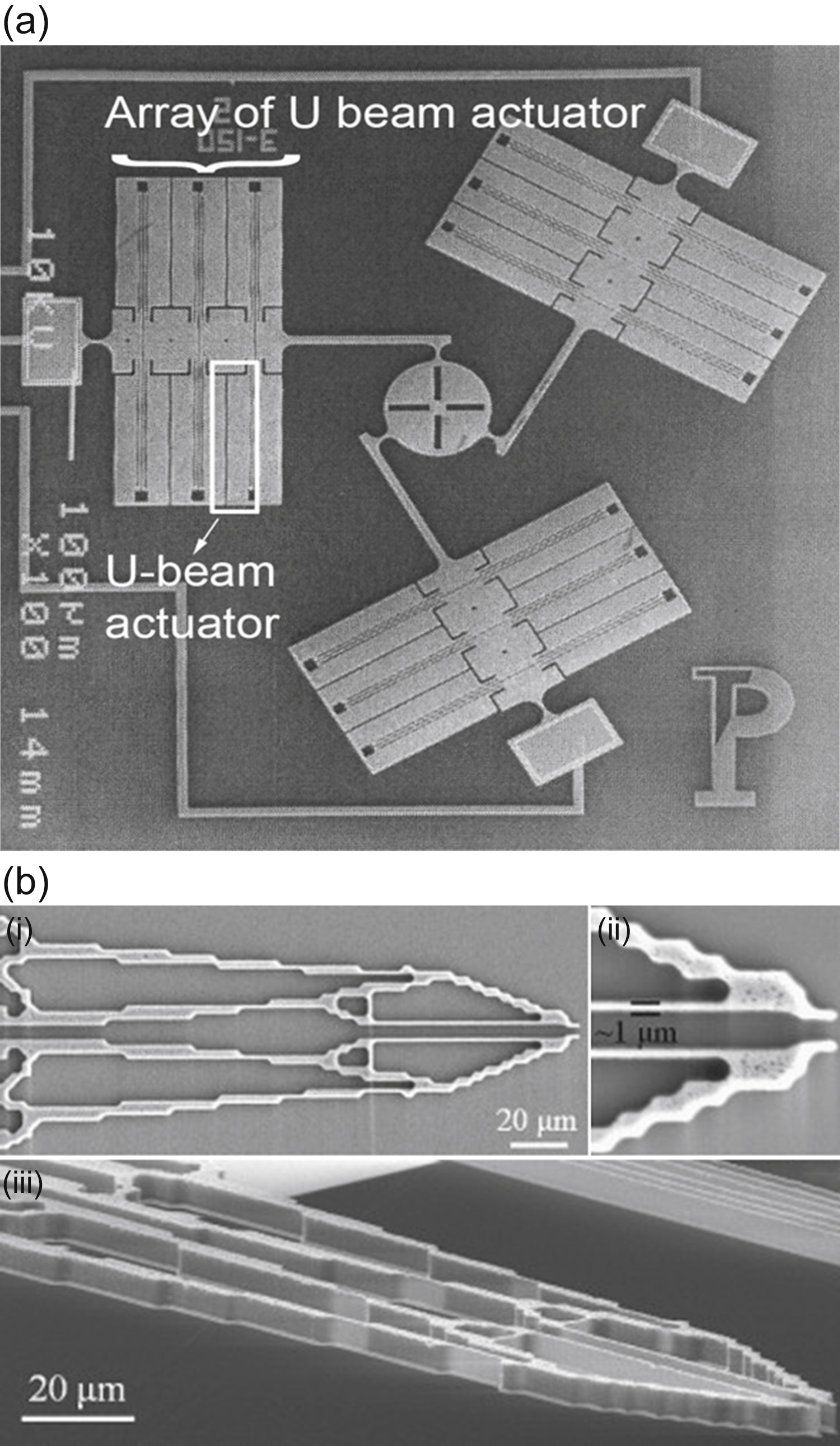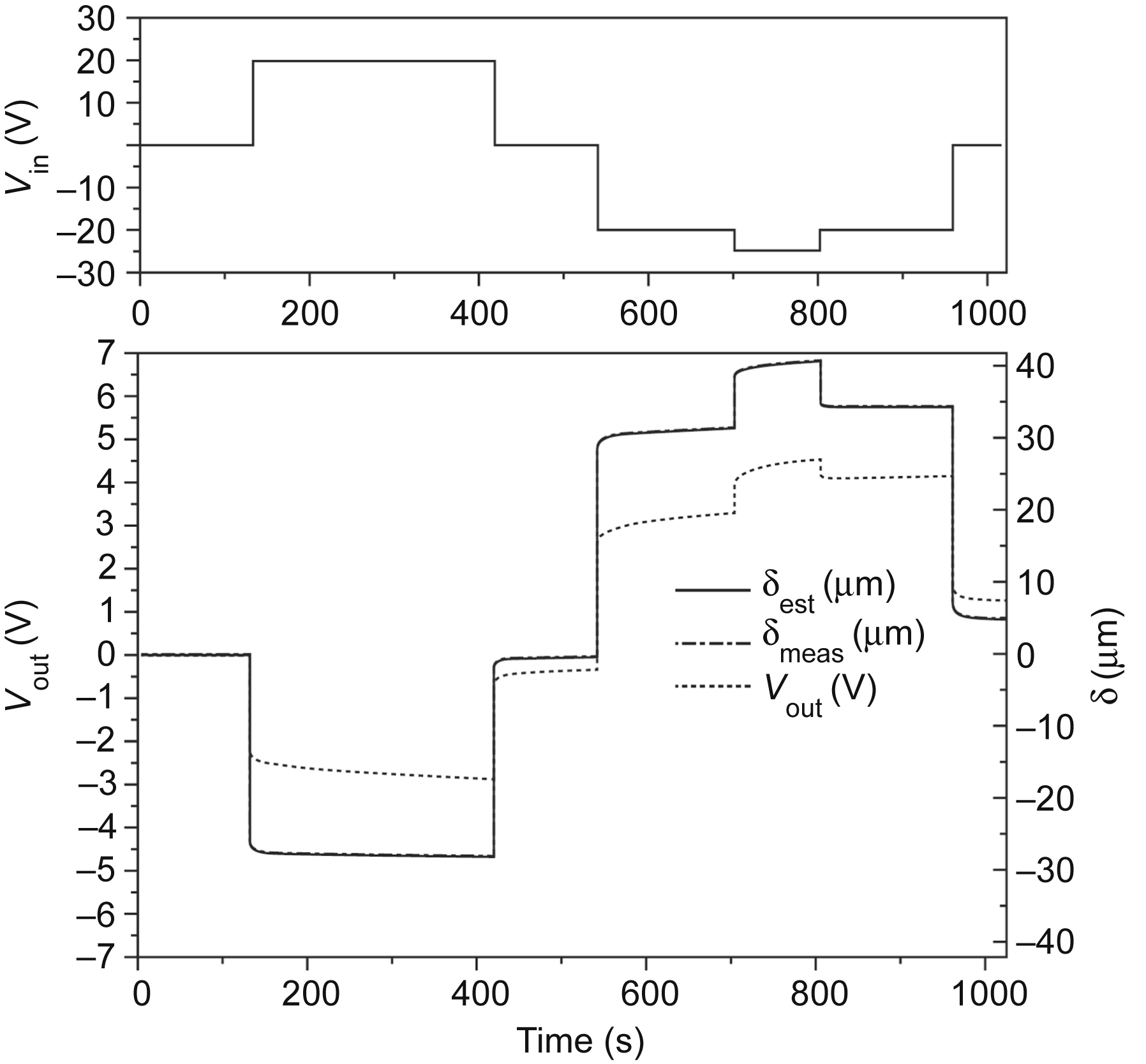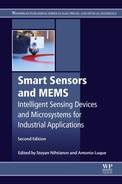AbuZaiter A, et al. Thermomechanical behavior of bulk NiTi shape-memory-alloy microactuators based on bimorph actuation. Microsystem Technologies. 2016;22(8):2125–2131.
Aioubi M.Y.A, et al. Deflection and load characterisation of bimorph actuators for bioMEMS and other applications. Microelectronic Engineering. 2004;73–74:898–903.
Andersen K.N, et al. Multimodal electrothermal silicon microgrippers for nanotube manipulation. IEEE Transactions Nanotechnology. 2009;8(1):76–85.
Andrei A, et al. AlN as an actuation material for MEMS applications: the case of AlN driven multilayered cantilevers. Sensors and Actuators A: Physical. 2008;141(2):565–576.
Asif K, et al. Piezoelectric thin films: an integrated review of transducers and energy harvesting. Smart Materials and Structures. 2016;25(5):053002 (16 pp.).
Barron T.H.K. Generalized Theory of Thermal Expansion of Solids, in Thermal Expansion of Solids. ASM International; 1998:1–105. .
Bechtold T, Rudnyi E.B, Korvink J.G. Dynamic electro-thermal simulation of microsystems–A review. Journal of Micromechanics and Microengineering. 2005;15(11):R17–R31.
Benecke W. Silicon-microactuators: activation mechanisms and scaling problems. In: International Conference on Solid-State Sensors and Actuators, 1991. Digest of Technical Papers, TRANSDUCERS '91. 1991. 1991 Francisco, CA, USA.
Bolzmacher C, et al. Displacement amplification of piezoelectric microactuators with a micromachined leverage unit. Sensors and Actuators A: Physical. 2010;157(1):61–67.
Borovic B, et al. The lateral instability problem in electrostatic comb drive actuators: modeling and feedback control. Journal of Micromechanics and Microengineering. 2006;16(7):1233–1241.
Boutchich M, et al. Force measurements on U-shaped electrothermal microactuators: applications to packaging. Proceedings of the Institution of Mechanical Engineers, Part C: Journal of Mechanical Engineering Science. 2008;222(1):87–96.
Cao A, Kim J, Lin L. Bi-directional electrothermal electromagnetic actuators. Journal of Micromechanics and Microengineering. 2007;17(5):975–982.
Castañer L, et al. Analysis of the extended operation range of electrostatic actuators by current-pulse drive. Sensors and Actuators A: Physical. 2001;90(3):181–190.
Chan E.K, Dutton R.W. Electrostatic micromechanical actuator with extended range of travel. Journal of Microelectromechanical Systems. 2000;9(3):321–328.
Chang K.-M, Lin R.-J, Deng I.-C. Design of low-temperature CMOS-process compatible membrane fabricated with sacrificial aluminum layer for thermally isolated applications. Sensors and Actuators A: Physical. 2007;134(2):660–667.
Chen S.-C, Culpepper M.L. Design of contoured microscale thermomechanical actuators. Journal of Microelectromechanical Systems. 2006;15(5):1226–1234.
Chen W.-C, et al. A reliable single-layer out-of-plane micromachined thermal actuator. Sensors and Actuators A: Physical. 2003;103(1–2):48–58.
Chen L, et al. High-performance, low-voltage, and easy-operable bending actuator based on aligned carbon nanotube/polymer composites. American Chemical Society Nano. 2011;5(3):1588–1593.
Chen C, Lee C. Design and modeling for comb drive actuator with enlarged static displacement. Sensors and Actuators A: Physical. 2004;115(2–3):530–539.
Chen R.S, Kung C, Lee G.-B. Analysis of the optimal dimension on the electrothermal microactuator. Journal of Micromechanics and Microengineering. 2002;12(3):291–296.
Cheung P, Horowitz R, Rowe R.T. Design, fabrication, position sensing, and control of an electrostatically-driven polysilicon microactuator. IEEE Transactions on Magnetics. 1996;32(1):122–128.
Chiou J.-C, Lin Y.-J, Kuo C.-F. Extending the traveling range with a cascade electrostatic comb-drive actuator. Journal of Micromechanics and Microengineering. 2008;18(1):015018 (7 pp.).
Conrad H, et al. A small-gap electrostatic micro-actuator for large deflections. Nature Communications. 2015;6:10078 (7 pp.).
Csaba E, et al. Linear micromechanical stepping drive for pinhole array positioning. Journal of Micromechanics and Microengineering. 2015;25(5):055009 (9 pp.).
Dai W, Lian K, Wang W. Design and fabrication of a SU-8 based electrostatic microactuator. Microsystem Technologies. 2007;13(3–4):271–277.
Dai C.-L. In situ electrostatic microactuators for measuring the Young's modulus of CMOS thin films. Journal of Micromechanics and Microengineering. 2003;13(5):563–567. .
Deng K, et al. Thermal microactuator based on temperature-sensitive hydrogel. Procedia Engineering. 2015;120:57–62.
Doll A, et al. Characterization of active silicon microvalves with piezoelectric membrane actuators. Microelectronic Engineering. 2007;84(5–8):1202–1206.
Doll J.C, et al. Aluminum nitride on titanium for CMOS compatible piezoelectric transducers. Journal of Micromechanics and Microengineering. 2010;20(2):025008 (8 pp.).
Dong J, Mukhopadhyay D, Ferreira P.M. Design, fabrication and testing of a silicon-on-insulator (SOI) MEMS parallel kinematics XY stage. Journal of Micromechanics and Microengineering. 2007;17(6):1154–1161.
Du C, Tan C.P, Yang J. Three-stage control for high servo bandwidth and small skew actuation. IEEE Transactions on Magnetics. 2015;51(1):1–7.
Duc T.C, Lau G.-K, Sarro P.M. Polymeric thermal microactuator with embedded silicon skeleton: Part II–fabrication, characterization, and application for 2-DOF microgripper. Journal of Microelectromechanical Systems. 2008;17(4):823–831.
Elata D, Leus V. How slender can comb-drive fingers be? Journal of Micromechanics and Microengineering. 2005;15(5):1055–1059.
Elbuken C, et al. Modeling and analysis of a 2-DOF bidirectional electro-thermal microactuator. Microsystem Technologies. 2009;15(5):713–722.
Ernst T, Ernst O. Microactuators and their technologies. Mechatronics. 2000;10(4–5):431–455.
Felder J, Lee E, DeVoe D.L. Large vertical displacement electrostatic zipper microstage actuators. Journal of Microelectromechanical Systems. 2015;24(4):896–903.
Ferrari M, et al. Piezoelectric low-curing-temperature ink for sensors and power harvesting. In: Malcovati P, et al., ed. Sensors and Microsystems: AISEM 2009 Proceedings. Springer; 2009:77–81.
Fu Y, et al. Design and fabrication of a hybrid actuator. Smart Materials and Structures. 2005;14(4):488–495.
Fu S, et al. Design and fabrication of a magnetic bi-stable electromagnetic MEMS relay. Microelectronics Journal. 2007;38(4–5):556–563.
Fujita H. Microactuators and, icromachines. In: Proceedings of the IEEE. 1998.
Gad-el-Hak M. In: Gad-el-Hak M, ed. Introduction, in The MEMS Handbook. CRC Press; 2002:1–5.
Gao P, et al. A piezoelectric micro-actuator with a three-dimensional structure and its micro-fabrication. Sensors and Actuators A: Physical. 2006;130–131:491–496.
Garcés-Schröder M, et al. Micro-Gripper: a new concept for a monolithic single-cell manipulation device. Sensors and Actuators A: Physical. 2015;236:130–139.
Geisberger A.A, Sarkar N. Techniques in MEMS microthermal actuators and their applications. In: Leondes C.T, ed. MEMS/NEMS Handbook Techniques and Applications. vol. 1. Springer; 2006:239–254.
Ginet P, et al. Modelling and characterizing a screen-printed metallic electrothermal microactuator. International Journal of Applied Ceramic Technology. 2007;4(5):423–427.
Giordano C, et al. AlN on polysilicon piezoelectric cantilevers for sensors/actuators. Microelectronic Engineering. 2009;86(4–6):1204–1207.
Grade J.D, Jerman H, Kenny T.W. Design of large deflection electrostatic actuators. Journal of Microelectromechanical Systems. 2003;12(3):1057–7157.
Grinberg I, et al. Direct torsion of bulk PZT using directional interdigitated electrodes. Procedia Engineering. 2016;168:1483–1487.
Guan C, Zhu Y. An electrothermal microactuator with Z-shaped beams. Journal of Micromechanics and Microengineering. 2010;20(8):085014 (9 pp.).
Guckel H, et al. Thermo-magnetic metal flexure actuators. In: 5th Technical Digest, IEEE Solid-State Sensor and Actuator Workshop. 1992 Hilton Head Island, SC, USA.
Haliyo D.S, Regnier S, Guinot J.-C. [mu]MAD, the adhesion based dynamic micro-manipulator. European Journal of Mechanics - A/Solids. 2003;22(6):903–916.
He G, Geng Z. Finite-time stabilization of a comb-drive electrostatic microactuator. IEEE/ASME Transactions on Mechatronics. 2012;17(1):107–115.
Henneken V.A, Tichem M, Sarro P.M. Improved thermal U-beam actuators for micro-assembly. Sensors and Actuators A: Physical. 2008;142(1):298–305.
Hirano T, et al. Design, fabrication, and operation of submicron gap comb-drive microactuators. Journal of Microelectromechanical Systems. 1992;1(1):52–59.
Honarmandi P, Zu J.W, Behdinan K. Analytical study and design characteristics of scratch drive actuators. Sensors and Actuators A: Physical. 2010;160(1–2):116–124.
Hou M.T.-K, et al. Extending displacements of comb drive actuators by adding secondary comb electrodes. Journal of Micromechanics and Microengineering. 2006;16(4):684–691.
Hu F, et al. A MEMS micromirror driven by electrostatic force. Journal of Electrostatics. 2010;68(3):237–242.
Hu B, et al. Earliest switch-on of dual-stage actuation in hard disk drives. Microsystem Technologies. 2016;22(6):1267–1273.
Huang C, et al. An electrostatic microactuator system for application in high-speed jets. Journal of Microelectromechanical Systems. 2002;11(3):222–235.
Huang S.-C, Lan G.-J. Design and fabrication of a micro-compliant amplifier with a topology optimal compliant mechanism integrated with a piezoelectric microactuator. Journal of Micromechanics and Microengineering. 2006;16(3):531–538.
Huang Q.-A, Lee N.K.S. Analysis and design of polysilicon thermal flexure actuator. Journal of Micromechanics and Microengineering. 1999;9(1):64–70.
Hung E.S, Senturia S.D. Extending the travel range of analog-tuned electrostatic actuators. Journal of Microelectromechanical Systems. 1999;8(4):497–505.
Ivan I.A, et al. Quasistatic displacement self-sensing method for cantilevered piezoelectric actuators. Review of Scientific Instruments. 2009;80(6):065102 (8 pp.).
Jaecklin V.P, et al. Micromechanical comb actuators with low driving voltage. Journal of Micromechanics and Microengineering. 1992;2(4):250–255.
Jing Y, Luo J. Structure and electrical properties of PMN-PZT micro-actuator deposited by tape-casting process. Journal of Materials Science: Materials in Electronics. 2005;16(5):287–294.
Jongsoo C, et al. A three-degree-of-freedom thin-film PZT-actuated microactuator with large out-of-plane displacement. Journal of Micromechanics and Microengineering. 2014;24(7):075017 (13 pp.).
Judy J.W, Tamagawa T, Polla D.L. Surface micromachined linear thermal microactuator. In: International Electron Devices Meeting, 1990. IEDM '90. Technical Digest. 1990 San Francisco, CA, USA.
Judy J.W. Microactuators. In: Korvink J, Haber O, eds. MEMS: A Practical Guide to Design, Analysis, and Applications. William Andrew Publishing; 2005.
Jungen A, et al. Electrothermal effects at the microscale and their consequences on system design. Journal of Micromechanics and Microengineering. 2006;16(8):1633–1638.
Kabla M, Ben-David E, Shilo D. A novel shape memory alloy microactuator for large in-plane strokes and forces. Smart Materials and Structures. 2016;25(7):075020 (8 pp.).
Karbasi S.M, et al. Optimal design analysis of electrothermal microactuators. Microsystem Technologies. 2010;16(7):1065–1071. .
Kerdlapee P, et al. Fabrication of electrostatic MEMS microactuator based on X-ray lithography with Pb-based X-ray mask and dry-film-transfer-to-PCB process. Microsystem Technologies. 2014;20(1):127–135.
Kim K, et al. Nanonewton force-controlled manipulation of biological cells using a monolithic MEMS microgripper with two-axis force feedback. Journal of Micromechanics and Microengineering. 2008;18(5):055013 (8 pp.).
Kim J.H, et al. Electromagnetically actuated 2-axis scanning micromirror with large aperture and tilting angle for lidar applications. In: 18th International Conference on Solid-State Sensors, Actuators and Microsystems (TRANSDUCERS). 2015:839–842.
Kim T.-S, Lee H.C. A highly sensitive bolometer structure with an electrostatic-actuated signal bridge. IEEE Transactions on Electron Devices. 2006;53(9):2392–2400.
Kolesar E.S, et al. In-plane tip deflection and force achieved with asymmetrical polysilicon electrothermal microactuators. Thin Solid Films. 2000;377–378:719–726.
Kommepalli H.K.R, et al. Design, fabrication, and performance of a piezoelectric uniflex microactuator. Journal of Microelectromechanical Systems. 2009;18(3):616–625.
Komori M, Hirakawa T. A magnetically driven linear microactuator with new driving method. IEEE/ASME Transactions on Mechatronics. 2005;10(3):335–338.
Krylov S, Barnea D.I. Bouncing mode electrostatically actuated scanning micromirror for video applications. Smart Materials and Structures. 2005;14(6):1281–1296.
Kwon H.N, Hwang I.-H, Lee J.-H. A pulse-operating electrostatic microactuator for bi-stable latching. Journal of Micromechanics and Microengineering. 2005;15(8):1511–1516.
Laermer F. Mechanical microsensors. In: Korvink J, Haber O, eds. MEMS: A Practical Guide to Design, Analysis, and Applications. William Andrew Publishing; 2005.
Lau G.-K, et al. Polymeric thermal microactuator with embedded silicon skeleton: Part I–design and analysis. Journal of Microelectromechanical Systems. 2008;17(4):809–822.
Lau J.H, et al. Optical MEMS Packaging: Communications, in Advance MEMS Packaging. McGraw-Hill; 2010:209–286.
Lau G.K, et al. An electro-thermally activated rotary micro-positioner for slider-level dual-stage positioning in hard disk drives. Journal of Micromechanics and Microengineering. 2016;26(3):035016 (10 pp.).
Lau G.-K, Goosen J.F.L, van Keulen F. Optimum design of polymeric thermal microactuator with embedded silicon skeleton. Journal of Microelectromechanical Systems. 2010;19(4):992–1001.
Lee A.P, et al. Vertical-actuated electrostatic comb drive with in situ capacitive position correction for application in phase shifting diffraction interferometry. Journal of Microelectromechanical Systems. 2003;12(6):960–971.
Lee K.B. Non-contact electrostatic microactuator using slit structures: theory and a preliminary test. Journal of Micromechanics and Microengineering. 2007;17(11):2186–2196.
Legtenberg R, Groeneveld A.W, Elwenspoek M. Comb-drive actuators for large displacements. Journal of Micromechanics and Microengineering. 1996;6(3):320–329.
Li S, Chen S. Analytical analysis of a circular PZT actuator for valveless micropumps. Sensors and Actuators A: Physical. 2003;104(2):151–161.
Li L, et al. Design, simulation and characterization of a MEMS optical scanner. Journal of Micromechanics and Microengineering. 2007;17(9):1781–1787.
Li L, Uttamchandani D. Modified asymmetric micro-electrothermal actuator: analysis and experimentation. Journal of Micromechanics and Microengineering. 2004;14(12):1734–1741.
Li L, Uttamchandani D. Dynamic response modelling and characterization of a vertical electrothermal actuator. Journal of Micromechanics and Microengineering. 2009;19(7):075014 (9 pp.).
Li L, Brown J.G, Uttamchandani D. Study of scratch drive actuator force characteristics. Journal of Micromechanics and Microengineering. 2002;12(6):736–741.
Lisovsky V.A, Yakovin S.D. Scaling law for a low-pressure gas breakdown in a homogeneous DC electric field. Journal of Experimental and Theoretical Physics Letters. 2000;72(2):34–37.
Liu X, Tong J, Sun Y. A millimeter-sized nanomanipulator with sub-nanometer positioning resolution and large force output. Smart Materials and Structures. 2007;16(5):1742–1750.
Ma J, et al. Displacement improvement of piezoelectric membrane microactuator by controllable in-plane stress. Sensors and Actuators A: Physical. 2015;230:45–51.
Maeda R, et al. Piezoelectric microactuator devices. Journal of Electroceramics. 2004;12(1–2):89–100.
Margarita T.-T, et al. Design and Simulation of a MEMS Pressure Microgripper Based on Electrothermal Microactuators. 2016.
Maroufi M, Bazaei A, Moheimani S.O.R. A high-bandwidth MEMS nanopositioner for on-chip AFM: design, characterization, and control. IEEE Transactions on Control Systems Technology. 2015;23(2):504–512.
Mashimo T, Toyama S. Rotary-linear piezoelectric microactuator with a cubic stator of side length 3.5 mm. IEEE Transactions on Ultrasonics, Ferroelectrics and Frequency Control. 2010;57(8):1825–1830.
Megat Hasnan M.M.I, et al. Modeling of a high force density fishbone shaped electrostatic comb drive microactuator. The Scientific World Journal. 2014;2014:8.
Mita M, et al. A micromachined impact microactuator driven by electrostatic force. Journal of Microelectromechanical Systems. 2003;12(1):37–41.
Mølhave K, Hansen O. Electro-thermally actuated microgrippers with integrated force-feedback. Journal of Micromechanics and Microengineering. 2005;15(6):1265–1270.
Moreira E.E, et al. Low-voltage, high-tuning range MEMS variable capacitor using closed-loop control. Procedia Engineering. 2016;168:1551–1554.
Morita T, et al. A miniaturized levitation system with motion control using a piezoelectric actuator. IEEE Transactions on Control Systems Technology. 2002;10(5):666–670.
Moulton T, Ananthasuresh G.K. Micromechanical devices with embedded electro-thermal-compliant actuation. Sensors and Actuators A: Physical. 2001;90(1–2):38–48.
Muyu C, et al. An electromagnetically-driven MEMS micromirror for laser projection. In: 10th IEEE International Conference on Nano/Micro Engineered and Molecular Systems. 2015:605–607.
Nadal-Guardia R, et al. Current drive methods to extend the range of travel of electrostatic microactuators beyond the voltage pull-in point. Journal of Microelectromechanical Systems. 2002;11(3):255–263.
Nguyen N.-T, Ho S.-S, Low C.L.-N. A polymeric microgripper with integrated thermal actuators. Journal of Micromechanics and Microengineering. 2004;14(7):969–974.
Oldham K.R, et al. Thin-film PZT lateral actuators with extended stroke. Journal of Microelectromechanical Systems. 2008;17(4):890–899.
Ouyang P.R, et al. Micro-motion devices technology: the state of arts review. The International Journal of Advanced Manufacturing Technology. 2008;38(5–6):463–478.
Ozsun O, et al. On heat transfer at miicroscale with implications for microactuator design. Journal of Micromechanics and Microengineering. 2009;19(4):045020 (13 pp.).
Pan C.S, Hsu W. An electro-thermally and laterally driven polysilicon microactuator. Journal of Micromechanics and Microengineering. 1997;7(1):7–13.
Pengwang E, et al. Scanning micromirror platform based on MEMS technology for medical application. Micromachines. 2016;7(2):29. .
Petrina A.M, Petrin A.A. On the question of information processing in nanomanipulation tasks. Computer Science. 2007;42(2):136–142.
Pham P.H, et al. Micro cam system driven by electrostatic comb-drive actuators based on SOI-MEMS technology. Microsystem Technologies. 2015;21(3):699–706.
Piyabongkarn D, et al. Travel range extension of a MEMS electrostatic microactuator. IEEE Transactions on Control Systems Technology. 2005;13(1):138–145.
Qiao D.-Y, Yuan W.-Z, Li X.-Y. A two-beam method for extending the working range of electrostatic parallel-plate micro-actuators. Journal of Electrostatics. 2007;65(4):256–262.
Qiu Z, et al. Large displacement vertical translational actuator based on piezoelectric thin films. Journal of Micromechanics and Microengineering. 2010;20(7):075016 (10 pp.).
Rakotondrabe M, Ivan I.A. Development and dynamic modeling of a new hybrid thermopiezoelectric microactuator. IEEE Transactions on Robotics. 2010;26(6):1077–1085.
Rocha L.A, Cretu E, Wolffenbuttel R.F. Using dynamic voltage drive in a parallel-plate electrostatic actuator for full-gap travel range and positioning. Journal of Microelectromechanical Systems. 2006;15(1):69–83.
Rogers B, et al. Improving tapping mode atomic force microscopy with piezoelectric cantilevers. Ultramicroscopy. 2004;100(3–4):267–276.
Rombach S, et al. Low power and highly precise closed-loop driving circuits for piezoelectric micromirrors with embedded capacitive position sensors. In: Proc. SPIE. 2016 97600Q–97600Q-11.
Royce B.S.H. Differential thermal expansion in microelectronic systems. IEEE Transactions on Components, Hybrids, and Manufacturing Technology. 1988;11(4):454–463.
Sahu B, Taylor C.R, Leang K.K. Emerging challenges of microactuators for nanoscale positioning, assembly, and manipulation. Journal of Manufacturing Science and Engineering. 2010;132(3):030917 (16 pp.).
Sardan O, et al. Topology optimized electrothermal polysilicon microgrippers. Microelectronic Engineering. 2008;85(5–6):1096–1099.
Schneider M, Bittner A, Schmid U. Improved piezoelectric constants of sputtered aluminium nitride thin films by pre-conditioning of the silicon surface. Journal of Physics D: Applied Physics. 2015;48(40):405301 (7 pp.).
Seeger J.I, Boser B.E. Dynamics and control of parallel-plate actuators beyond the electrostatic instability. In: Transducers '99, The 10th International Conference on Solid-State Sensors and Actuators. 1999 Sendai, Japan.
Seeger J.I, Boser B.E. Charge control of parallel-plate, electrostatic actuators and the tip-in instability. Journal of Microelectromechanical Systems. 2003;12(5):656–671.
Shao C.-Y, et al. Electrostatic actuator probe with curved electrodes for time-of-flight scanning force microscopy. Review of Scientific Instruments. 2010;81(8):083702 (6 pp.).
Shay B, Hubbard T, Kujath M. Linear frictional micro-conveyors. Sensors and Actuators A: Physical. 2008;148(1):290–298.
Shivhare P, Uma G, Umapathy M. Design enhancement of a chevron electrothermally actuated microgripper for improved gripping performance. Microsystem Technologies. 2016;22(11):2623–2631.
Singh J, Agarwa A, Soundarapandian M. A novel electrostatic microactuator for large deflections in MEMS applications. Thin Solid Films. 2006;504(1–2):64–68.
So H, Pisano A.P. Electrothermal modeling, fabrication and analysis of low-power consumption thermal actuator with buckling arm. Microsystem Technologies. 2015;21(1):195–202.
Srikar V.T, Spearing S.M. Materials selection for microfabricated electrostatic actuators. Sensors and Actuators A: Physical. 2003;102(3):279–285. .
Srinivasan P, Gollasch C.O, Kraft M. Three dimensional electrostatic actuators for tunable optical micro cavities. Sensors and Actuators A: Physical. 2010;161(1–2):191–198.
Sun Y, et al. A high-aspect-ratio two-axis electrostatic microactuator with extended travel range. Sensors and Actuators A: Physical. 2002;102(1–2):49–60.
Sun L, et al. A silicon integrated micro nano-positioning XY-stage for nano-manipulation. Journal of Micromechanics and Microengineering. 2008;18(12):125004 (9 pp.).
Syms R.R.A, Zou H, Stagg J. Micro-opto-electro-mechanical systems alignment stages with Vernier latch mechanisms. Journal of Optics A: Pure and Applied Optics. 2006;8(7):S305–S312.
Takahashi K, et al. Submicrometer comb-drive actuators fabricated on thin single crystalline silicon layer. IEEE Transactions on Industrial Electronics. 2009;56(4):991–995.
Tamagawa T, Polla D.L, Hsueh C.C. Lead zirconate titanate (PZT) thin films in surface-micromachined sensor structures. In: International Electron Devices Meeting, IEDM '90. Technical Digest. 1990 San Francisco, CA, USA.
Tang W.C, Lim M.G, Howe R.T. Electrostatic comb drive levitation and control method. Journal of Microelectromechanical Systems. 1992;1(4):170–178.
Tee K.P, Ge S.S, Eng Hock Tay F. Adaptive control of electrostatic microactuators with bidirectional drive. IEEE Transactions on Control Systems Technology. 2009;17(2):340–352.
Tian W.C, Chen Z.Q, Cao Y.R. Analysis and test of a new MEMS micro-actuator. Microsystem Technologies. 2016;22(5):943–952.
Tirole N, et al. Three-dimensional silicon electrostatic linear micro actuator. Sensors and Actuators A: Physical. 1995;48(2):145–150.
Trimmer W, Stroud R.H. Scaling of micromechanical devices. In: Gad-el-Hak M, ed. The MEMS Handbook. CRC Press; 2002:6–18.
Trolier-McKinstry S, Muralt P. Thin film piezoelectrics for MEMS. Chemistry and Materials Science. 2004;12(1–2):7–17.
Tsai L.-N, et al. Performance improvement of an electrothermal microactuator fabricated using Ni-diamond nanocomposite. Journal of Microelectromechanical Systems. 2006;15(1):149–158.
Tsai J-c, et al. Two-axis MEMS scanners with radial vertical combdrive actuators–Design, theoretical analysis, and fabrication. Journal of Optics A: Pure and Applied Optics. 2008;10(4):044006 (7 pp.).
Tsai Y.-C, Lei S.H, Sudin H. Design and analysis of planar compliant microgripper based on kinematic approach. Journal of Micromechanics and Microengineering. 2005;15(1):143–156.
Tsuchiya K, Davies S.T. Fabrication of TiNi shape memory alloy microactuators by ion beam sputter deposition. Nanotechnology. 1998;9(2):67.
Varona J, Tecpoyotl-Torres M, Hamoui A.A. Design of MEMS vertical-horizontal chevron thermal actuators. Sensors and Actuators A: Physical. 2009;153(1):127–130.
Wang T, et al. Increasing efficiency, speed, and responsivity of vanadium dioxide based photothermally driven actuators using single-wall carbon nanotube thin-films. ACS Nano. 2015;9(4):4371–4378.
Wang W, et al. A compact fourier transform spectrometer on a silicon optical bench with an electrothermal MEMS mirror. Journal of Microelectromechanical Systems. 2016;25(2):347–355.
Wang Z, Zhu W, Yao X. $d_31$ Type inplane bending multilayer piezoelectric microactuators–A design concept and its applications. Sensors and Actuators A: Physical. 2002;101(3):262–268. .
Wiederkehr R.S, et al. The gas flow rate increase obtained by an oscillating piezoelectric actuator on a micronozzle. Sensors and Actuators A: Physical. 2008;144(1):154–160.
Wu L, Xie H. A large vertical displacement electrothermal bimorph microactuator with very small lateral shift. Sensors and Actuators A: Physical. 2008;145–146:371–379.
Xi X, et al. A MEMS XY-stage integrating compliant mechanism for nanopositioning at sub-nanometer resolution. Journal of Micromechanics and Microengineering. 2016;26(2):025014 (9 pp.).
Yan D, Khajepour A, Mansour R. Design and modeling of a MEMS bidirectional vertical thermal actuator. Journal of Micromechanics and Microengineering. 2004;14(7):841–850.
Yang H.-H, et al. Electrostatic micro-actuator with a pre-charged series capacitor: modeling, design, and demonstration. Journal of Micromechanics and Microengineering. 2014;24(6):065012 (8 pp.).
Yazdani M, Payam A.F. A comparative study on material selection of microelectromechanical systems electrostatic actuators using Ashby, VIKOR and TOPSIS. Materials and Design. 2015;65:328–334.
Yong Z, Tzu-Hsuan C. A review of microelectromechanical systems for nanoscale mechanical characterization. Journal of Micromechanics and Microengineering. 2015;25(9):093001 (21 pp.).
Zeng Z, et al. Low-voltage and high-performance electrothermal actuator based on multi-walled carbon nanotube/polymer composites. Carbon. 2015;84:327–334.
Zhang Y, et al. Macro-modeling for polysilicon cascaded bent beam electrothermal microactuators. Sensors and Actuators A: Physical. 2006;128(1):165–175.
Zhang L, et al. Dual-stage nanopositioning Scheme for 10 Tbit/in2 hard disk drives with a shear-mode piezoelectric single-crystal microactuator. IEEE Transactions on Magnetics. 2015;51(4):1–9.
Zhou G, Dowd P. Tilted folded-beam suspension for extending the stable travel range of comb-drive actuators. Journal of Micromechanics and Microengineering. 2003;13(2):178–183.
Zhu H, et al. Membrane microcantilever arrays fabrication with PZT thin films for nanorange movement. Microsystem Technologies. 2005;11(8–10):1121–1126.
Zhu Y, et al. A piezoelectric unimorph actuator based tip-tilt-piston micromirror with high fill factor and small tilt and lateral shift. Sensors and Actuators A: Physical. 2011;167(2):495–501.
Zhu Y, Corigliano A, Espinosa H.D. A thermal actuator for nanoscale in situ microscopy testing: design and characterization. Journal of Micromechanics and Microengineering. 2006;16(2):242–253.
Zurn S, et al. Fabrication and structural characterization of a resonant frequency PZT microcantilever. Smart Materials and Structures. 2001;10(2):252–263.
 (12.5)
(12.5)